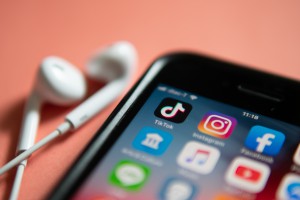
In today’s digital era, social media platforms have become a fundamental part of young people’s lives. While these platforms offer numerous opportunities for connectivity and self-expression, they also bring forth a range of mental health challenges. Among the various social media platforms, TikTok and Instagram have gained immense popularity among youngsters. However, the excessive use of these platforms has raised concerns regarding the mental well-being of students. This blog explores the mental health issues faced by youngsters in schools and highlights the significant role played by TikTok and Instagram.
The Rise of Mental Health Challenges
Mental health issues among youngsters have witnessed a significant surge in recent years. According to research, the prevalence of anxiety, depression, and loneliness has increased, with school-aged children and adolescents being particularly vulnerable. These challenges have profound effects on their academic performance, social interactions, and overall well-being.
The Role of Social Media
Social media platforms have transformed the way young people communicate, interact, and perceive themselves and the world around them. While the impact of social media on mental health is multifaceted, the following key factors contribute to the challenges faced by youngsters:
- Unrealistic Standards: Platforms like TikTok and Instagram promote idealised and edited versions of reality, showcasing only the most glamorous and filtered aspects of life. This constant exposure to picture-perfect images can lead to feelings of inadequacy and a negative self-image, especially among impressionable youngsters.
- Cyberbullying: Social media platforms provide a breeding ground for cyberbullying, which can have severe consequences on a student’s mental health. The anonymity and distance offered by these platforms often embolden individuals to engage in hurtful behaviour, causing emotional distress and social isolation.
- Fear of Missing Out (FOMO): Youngsters on social media platforms may experience FOMO, fearing that they are missing out on exciting experiences or events depicted by their peers. This fear can contribute to feelings of unhappiness, loneliness, and a constant need to stay connected, leading to excessive screen time and neglect of other essential activities.
- Social Comparison: Social media platforms facilitate constant social comparison, as users tend to compare their lives, appearances, and achievements with those of others. This can generate a sense of inferiority and inadequacy, potentially triggering mental health issues such as anxiety and depression.
The TikTok and Instagram Influence

TikTok and Instagram, being two of the most popular social media platforms, have gained immense attention from youngsters. The distinctive features and content found on these platforms intensify the impact on mental health:
- TikTok: Known for its short-form videos, TikTok’s algorithm-driven content can lead to a continuous loop of scrolling and excessive consumption. This constant exposure to viral challenges, body image trends, and filters can contribute to self-esteem issues and distortions of reality.
- Instagram: With its emphasis on visual content, Instagram can magnify the pressure to maintain a perfect appearance and a glamorous lifestyle. The platform’s focus on likes, comments, and follower count can also lead to a validation-seeking mindset, aggravating anxiety, and self-worth concerns.
Addressing the Challenge
It is crucial for parents, educators, and policymakers to work collaboratively to moderate the negative impact of social media on youngsters’ mental health:
- Digital Literacy: Educate students about healthy social media usage, critical thinking skills, and the importance of separating virtual reality from real-life experiences.
- Emotional Support: Foster an environment where students feel safe and encouraged to discuss their feelings and concerns openly. Encourage the development of offline hobbies, physical activities, and face-to-face interactions.
- Parental Involvement: Parents should actively engage in their child’s online activities, establish boundaries for screen time, and have open conversations about the potential risks and benefits of social media.
- Platform Responsibility: Social media platforms must take responsibility for user well-being. Implementing features such as time limits, content filters, and anti-bullying measures can help create a safer online environment.
While social media platforms like TikTok and Instagram offer tremendous opportunities for self-expression and connection, they also present significant challenges to the mental health of youngsters in schools. By promoting awareness, fostering digital literacy, and encouraging healthy offline habits, we can empower young people to navigate social media responsibly and maintain their mental well-being. It is imperative for society to work together to create a healthier digital landscape for the next generation.



